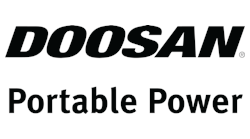Getting a construction job done quickly, safely, efficiently, and with the lowest expenses involved may bring to mind the latest in high-tech heavy lifting equipment. Those machines are critical in getting the work completed. But plenty of other equipment out there works hard behind the scenes preventing the glitches inevitably leading to delays. Those postponements in work can swiftly add up leading to cost overruns—not to mention headaches for project managers. Here are some options that may just be a good fit on many busy job sites.
Monitoring Job Sites During and After Hours
Sensera Systems has a simple way to protect a worksite both during construction and especially after hours. The technology has been successful in applications as varied as construction sites, municipalities, tribal lands, and sensitive ecological sites. The cameras are very compact, according to Wendi Burke, vice president, marketing and customer success.
“They are also quite simple to set up with just a screwdriver and wrench, all within about 20 minutes. The compact size of the cameras enables them to easily be moved around from location to location if needed. The equipment is robust, designed specifically for use on construction sites, in addition to being very reliable.”
Though they can run on WiFi, due to their frequent use in remote locations, they are most commonly deployed with 4G LTE. “When we determine the location of the project site, we check for the carriers with the strongest connectivity in the area. We then build the cameras, here in Golden, Colorado, with the carrier configuration that will provide the best service for our customers.
“We have many deployments in Canada and remote locations, some of which utilize XL Models which include double the batteries and two solar panels, giving the user 10 days of extended battery backup. These are great for locations that experience long periods with minimal sun. Two solar panels allow for that extra collection.”
Likewise, in a city with so-called urban canyons, extended sunlight is blocked as well. An XL Model helps with that scenario. Cameras typically can be mounted to phone poles, adjacent buildings, or 20-foot telescoping poles in which the camera, before telescoping up to the desired level, may be mounted onto the pole for greater ease in deployment.
Security models come with three different sensors, according to Burke. “These include color, low-light, and black and white, and thermal cameras with an IR Illuminator to light up areas without light. These security models include motion detected alerts that can be sent to email and/or mobile devices via SMS text messaging to people assigned to receive your alerts, and can include a video clip, still images, or multiple still images.
“We had an incident where someone stole a camera along with other job site equipment. The thieves were unaware that the camera would continue to operate on battery backup and the internal GPS was able to lead the police directly to the person’s storage location, the camera capturing images the entire time.”
One of the aspects of how the product is used includes the area of safety and risk. This includes such features as the ability to capture visual documentation for dispute resolution. “GCs often use cameras for progress monitoring, productivity, collaboration, and logistics. Documenting as-built imagery can be critical with multiple subs onsite completing different portions of the project.
“For example, our camera’s SiteCloud platform includes real-time weather data so in certain locations where a concrete pour must only be done at certain temperatures or conditions for it to set up correctly, that process may be monitored. So if a newly-built concrete deck fails, you have documentation and context for any resulting investigation into cause and fault. As you can imagine, this is very useful for dispute resolution and also to discover if a step in the construction process has been skipped: here is what went wrong and why.”
It is possible to set up the system to send motion-detected alerts when workers or vehicles enter “restricted zones.” For heavy equipment and cranes, there is going to be a zone where you do not want people entering. If you are a project manager or superintendent, you can use this technology to get a real-time alert.
“Someone has just entered an area we told people not to enter, and obviously you can then get on the walkie-talkie to tell people to get out of there,” adds Burke. “Something like, ‘You’re in a restricted zone. For your safety, I need you to get out of there right now!’”
New Equipment Meets Demands of Larger Work Sites
Multiquip offers a wide variety of products used for critical job site tasks that large equipment cannot handle. This includes pipe frame generators up to six kW, and portable generators up to 600 kW. De-watering pumps for job sites are included in the lineup along with compaction equipment and concrete finishing equipment, from a 3-foot walk-behind trowel to 12-foot ride-on trowels. The proper trowel size selection is made based on the total square footage to be finished and can require multiple trowels.
“Our water pumps assist contractors with a challenging water table down South or sudden flooding due to rainstorms,” explains Torsten Erbel, senior director for product management at Multiquip. “The PRX trowel we offer is the most significant product Multiquip has brought to market.
“Assisted by onboard computers, these hydrostatic power trowels have achieved unprecedented F-numbers to guarantee floor flatness. The second major development is the introduction of our LD-6—rolled out last year at the World of Concrete—extremely successful, completely changing the operation and performance of a mechanical trowel.”
Multiquip eliminated many of the mechanical drive and steering parts, switching to hydrostatic drive and joystick controls and allowing us to do away with many of the mechanical wear parts. “Contractors now have a machine with super reliability and fewer parts to maintain, making it more cost-efficient while increasing their uptime substantially.”
Work sites have changed dramatically in recent years, especially with the development of super centers, huge distribution centers, and warehouses, adds Erbel. These can be from .5 million square feet up to 3 million square feet in size.
“Since warehouse operations are all electronic today, floor flatness requirements are higher than ever before, with variances typically less than 1/16 of an inch. It remains a challenge for trowel manufacturers to produce equipment meeting those requirements.”
Doing the Work off the Job Site
The fact that a growing number of pieces of equipment may be controlled off the work site is doing a lot to change the work itself and challenge operators. Caterpillar keeps the need for additional work site equipment to a minimum, with features such as their Cat Command for Loading to its small wheel loader line. Removing the operator from the machine, Command provides semi-autonomous remote operation of Cat 926M, 930M, and 938M models to increase operating safety in potentially hazardous operating environments.
New Cat Command for Loading for small wheel loaders will be available in both line-of-sight and non-line-of-sight operating configurations. By allowing the user to comfortably control the machine from a safe location, Command maintains high machine productivity in operating environments such as stevedoring, steel mill blast furnaces, industrial and waste, and demolition and site decommissioning.
A new dealer-installed field kit will make the Cat 926M, 930M, and 938M models Command-ready. The system includes rear and side cameras, an electric over hydraulic steering system, and a Command activation lever mounted conveniently on the machine for ground-level access. Installed on the cabin roof are cameras, indicator lights, microphones, wireless receivers, and antennae. Since Command controls are integrated with machine electronics, users will experience the same control response as they would operating inside the cab, allowing for productivity to be maintained from a distance.
Flexible remote configurations include line-of-sight Command for Loading operation which comes complete with a lightweight, compact control console supported by a comfortable shoulder harness. Basic machine controls like wheel loader startup/shutdown, bucket rack/dump, and lift/lower are easily accessed through the ergonomic Command console control layout. Machine commands sent from the remote console are sent directly to the engine and implement electronics via a detected radio, reducing machine response delay.
The non-line-of-sight Command for Loading solution includes a modular, customized Command station that positions users in a familiar and comfortable seated position that simulates traditional machine control. One user can connect multiple machines from a single station, but only control one machine at a time. It is also compatible with other Command offerings for Cat equipment, such as excavators and dozers.
Station components include machine joystick and foot pedal controls for all the company’s Command technology-capable machines. A touchscreen mount is incorporated in the station design for machine control, while universal screen mounts are included for camera displays of the wheel loader. An emergency A-Stop or Remote Shutdown Switch button is located on the Command station to quickly halt all machine movements. At the job site, an optional remote All-Stop control is available for people working around non-line-of-sight Command loaders.
Lights Keep the Work Going After Hours
Allmand Brothers, Inc. of Holdrege, NE, has an extensive line of products to help with the increasing number of projects involving nighttime work. Their Night-Lite Pro II V-Series features a vertical hydraulic mass with power cables encased in Nycoil flexible tubing to eliminate tangling and stretching of the tower wiring. Available in LED or metal halide, this fixture provides up to 542,000 lumens. Maintain efficiency through working hours with a 30-gallon polyethylene fuel tank, allowing work to get done during the night.
Whatever the project or job site condition may be, the Maxi-Air Mobile Air Compressor will maximize a job site’s productivity. Their best-in-class air compressors withstand the rigors of the rough conditions found in many job sites and offer consistent performance. To keep the lights on, and for running equipment needing air compression, Allmand will make that possible for the life of the product.


